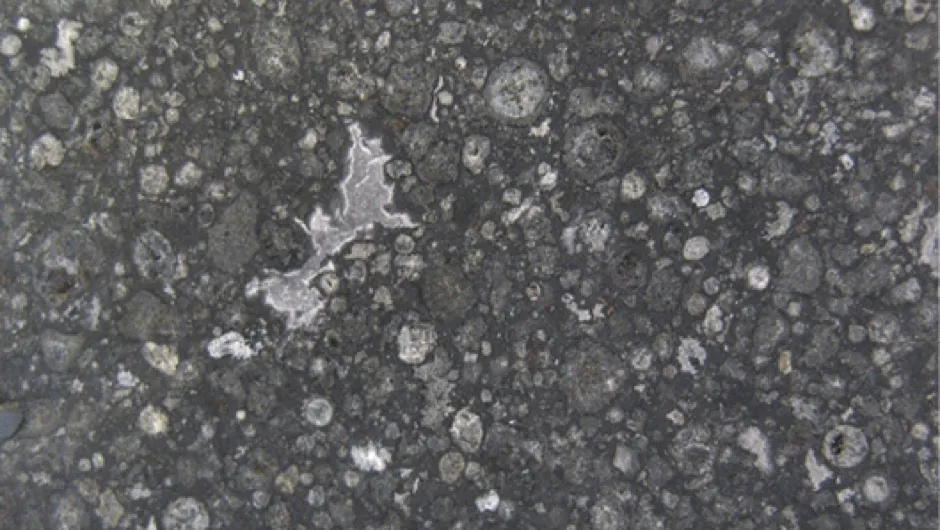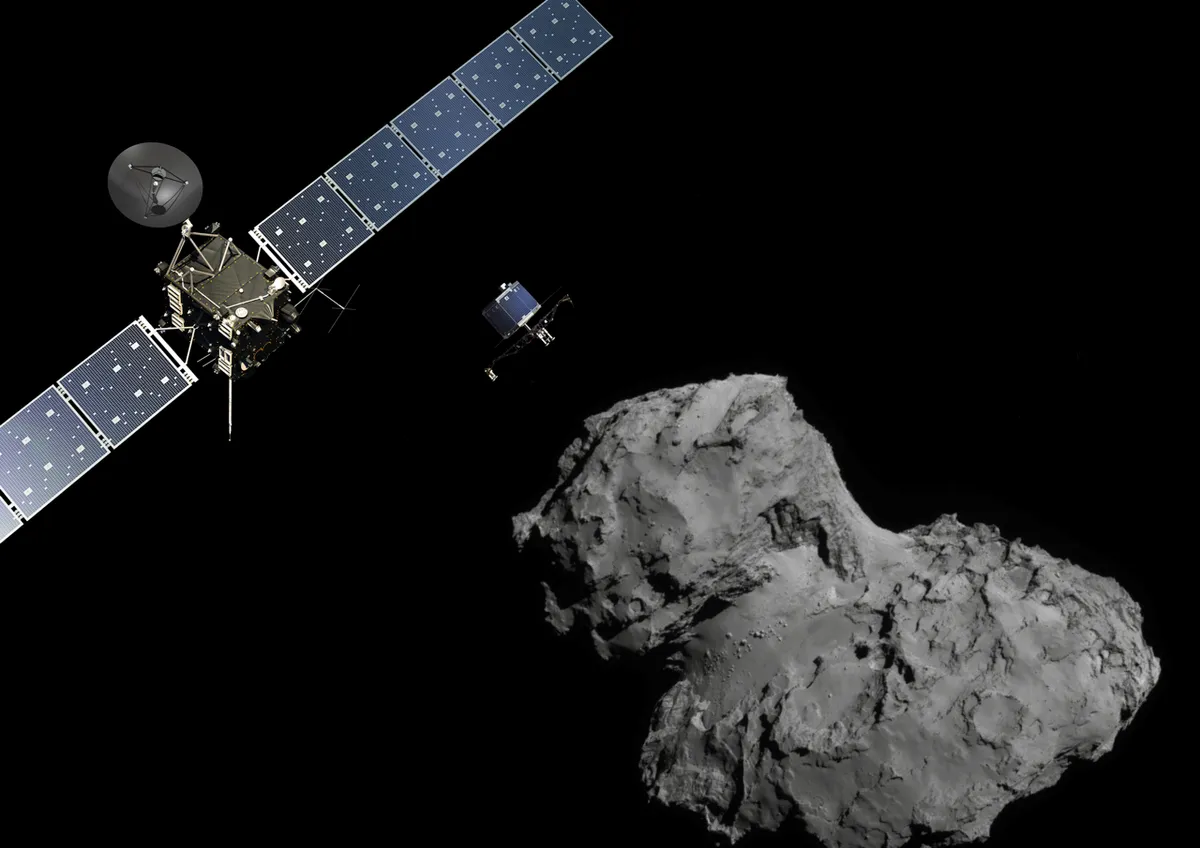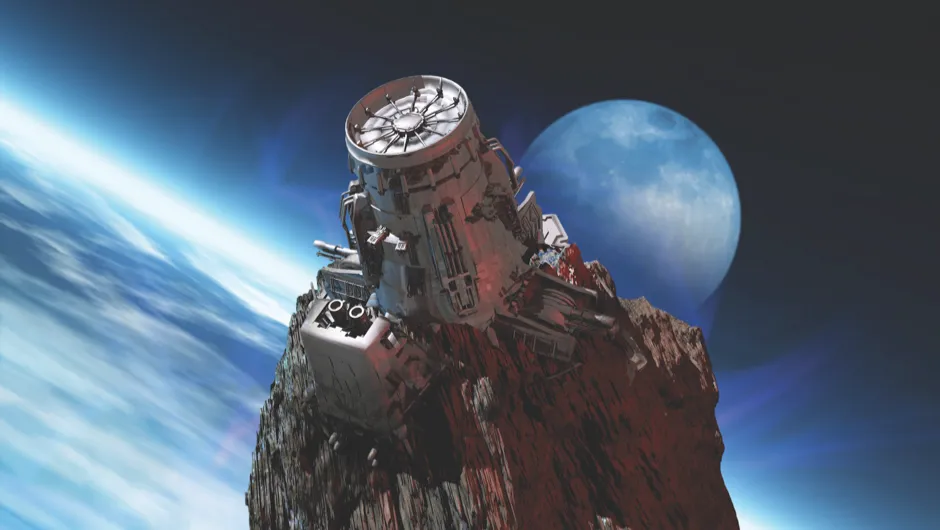Yes, they might appear to be nothing more than big hunks of rock floating around in the vacuum of space, but asteroids and comets hold secrets that could help us understand the origins of life on Earth, and prepare us for the future.
Natalie Starkey, author of Catching Stardust: Comets, Asteroids and the Birth of the Solar System (£16.99, Bloomsbury), tells us more.
1
Comets and asteroids are ancient explorers
If we want to learn more about the origins of the Solar System, and even life, then we should look to the comets and asteroids.
These enigmatic cosmic travellers of space are ancient; around 4.6 billion years old. They were formed from the essence of space itself, collecting together their building ingredients from a swirling, chaotic cloud of gas and dust that eventually coalesced to form the rest of the Solar System, and all the varied objects it contains.
Compared to planets, comets and asteroids are relatively small but their size does not make them any less special.
Read more about comets and asteroids:
- The sky is falling: should you be worried about asteroids and comets?
- Comets probably not the answer to Tabby’s star mystery
- Giant asteroid collision in outer space kicked off ancient ice age
The comets formed further from the Sun than the asteroids, in the cold outer reaches of the Solar System, fashioning themselves into icy objects of various shapes. Their low temperature at formation, and ever since, has allowed them to retain ices that originally belonged to interstellar space, which is the area that existed before our Solar System came into being.
In some ways, comets are said to act like time capsules from the birth of the Solar System. Today, comets still tend to be found on the far edges of the Solar System, in places such as the Kuiper Belt and Oort Cloud beyond the orbit of Neptune. Some are so far away that they are almost as close to the next star system as our own.

The asteroids, on the other hand – whilst almost as old as the comets – were born in the more violent and busy inner Solar System just before, or at the same time as, theplanets. In many ways they are just failed planets, never collecting together sufficient rock supplies to form into large enough objects that could own their orbit around the Sun.
Most of the asteroids have since gathered together to inhabit the portion of space known as the asteroid belt, sitting between Mars and Jupiter. Occasionally, an asteroid gets pushed out of this region by the passing gravitational influence of Jupiter, to make a journey towards the terrestrial planets, including Earth.
Comets do the same and this is the reason humans sometimes get to glimpse one of these awe-inspiring ancient space voyagers as they zoom past Earth, scattering a bounty of cosmic dust in their wake.
2
Space gives us free cosmic samples
It is hard for scientists to study comets and asteroids for many reasons; they are small, often dark and usually far away, features that make them hard to see from Earth.
Of course, around twenty space missions have been sent out to explore these objects, sometimes even collecting samples of them. Despite these triumphs we’ve still only sampled – and returned to Earth – rock from one comet and one asteroid. This is not a very good sample size compared to the many millions, or even billions, of objects out there. But it is a start, and certainly having some sample is better than none.
Fortunately, the dust thatcomets and asteroids leave behind in space actually does us a few favours. Not only by producing the elusive zodiacal light sometimes seen after evening twilight – as the Sun is scattered off tiny flecks of dust to produce an eerie glow in the sky – but also by providing scientists with free samples of space.
The dust that is scattered throughout space by comets and asteroids as they make their way around the Solar System can eventually fall to Earth. In fact, pieces of space fall on us all the time, anything from dust smaller than the width of a human hair to large bus-sized chunks of rock. Thankfully, the latter do so infrequently.

Whatever the size of space rock that arrives on Earth, it is all useful. While I’ve studied pieces of larger meteorite samples, much of my own research has utilised tiny dust-sized samples to investigate the beginnings of the Solar System. It is amazing what modern laboratory equipment is capable of measuring in a piece of rock that you can’t even see without the use of a powerful microscope.
The important thing about these free cosmic gifts is that they come from a wide range of different comets and asteroids, sampling the breadth of the Solar System, something that we will struggle to do with space missions for as long as humans might be around.
3
We’ve landed on the side of a comet
In 2014, theESA Rosetta mission became the first spacecraft to land on the side of a comet. The object it met was comet 67P/Churyumov-Gerasimenko (67P/C-G), which is just 3x5km in size, composed of ice and dust.
Landing on it was no easy task. Rosetta had to embark on a 10-year journey after launch just to catch up with 67P/C-G, performing various fly-bys ofMars and Earth to gain gravitational energy to continue its journey.
Then it had to perform complicated manoeuvres to fly alongside the comet for months, carefully mapping its surface, before deploying a lander to meet it. All the while, both 67P/C-G and Rosetta were hurtling towards the Sun.
4
Comets and asteroids contain the building blocks for life
The Rosetta lander, Philae, carried out scientific experiments on 67P/C-G with its well-equipped space laboratory. One of the fascinating things, among many, scientists discovered was that 67P/C-G contains glycine, which is an amino acid.
Although glycine had already been detected in cometary samples returned by NASA’s Stardustfly-by mission to comet Wild2, there were always questions over potential contamination issues. Rosetta proved, without a doubt, that comets can contain amino acids and, therefore, that comets could have delivered these importantorganic (prebiotic) moleculesto Earth to form the basic building blocks for life.

Despite these important cometary finds, for over 50 years amino acids have been identified as a common component in asteroids. In fact, the famous Murchison meteorite that fell in Australia in 1969 has been found to containover 80 amino acids.
The debate about whether life on Earth was delivered from outer space remains, but it has important implications for whether we can expect to find life elsewhere in the Solar System, or even beyond.
5
Studying small space objects may help to save humanity from destruction
If you can’t be persuaded that learning about the birth of the Solar System – and about the origins of life on Earth – is a good enough reason to study comets and asteroids then I have something else. Understanding the composition, structure and behaviour of these small space objects may one day save us from mass extinction.
There is almost certainly a comet or asteroid lurking out there that has its sights set on a collision with our precious blue planet. Of course, Earth will be fine as it has survived many large impacts in its history, but life on Earth might struggle.
A small piece of a comet or asteroid impacting Earth gives us little to worry about as it would most likely get destroyed as it travels through our protective atmospheric layer, or land unnoticed in a remote region.
Read more about space exploration:
- How will private space travel change the way we explore the Solar System?
- 8 beautiful Hubble Space Telescope images you probably haven't seen before
- 6 out-of-this-world experiments recreating space on Earth
However, a large chunk of space rock that survives the effects of atmospheric entry can pose a great risk to life. After all, the poor dinosaurs– along with 80 per cent of the animals on Earth at the time – were wiped out by an impact event 65 million years ago. It has happened more than once, and it will almost certainly happen again.
However, by knowing more about what comets and asteroids are made of, and by knowing their exact course through space, scientists can better predict their behaviour and potentially save us from extinction.
If a large space rock is found to be heading for us, then the more scientists know about these objects the better. They might be able to re-direct it onto a different orbit or destroy it before it gets too close.

Some of the same techniques to be used for such endeavours might also help us to find and excavate resources – in the form of precious metals and water – from comets and asteroids. Space mining might sound like science-fiction, but commercial companies have already taken their first tentative steps on the ladder to economic mining activities in space.
Mined resources could be used to develop new and existing advanced technologies on Earth, as well as providing fuel to allow us to explore further into the Solar System. It is possible that we might be returning precious metals to Earth from asteroids within decades so watch this space, so to speak.
Catching Stardust: Comets, Asteroids and the Birth of the Solar System by Natalie Starkey is available now (£16.99, Bloomsbury)
- Buy it now from Amazon UK or Waterstones

